Extremely weathered dolerite cobbles and boulders embedded in a dense to very dense matrix of extremely weathered and hydrothermally altered doleritic material are well exposed on the foreshore, and less well exposed on the steep coastal embankment, for several hundred metres south of the Tertiary volcanics at Charles Darwin Cliff at Sandy Bay.
The published 1:25,000 scale digital geological map of Hobart interprets the material as Jurassic-age dolerite bedrock – faulted against Parmeener Supergroup sedimentary rocks to the west. The location is close to where the NW – SE Cascades Fault Zone abuts the NNE – SSW Taroona Fault.
Geotechnical investigations in 2008 for proposed townhouses at 694 – 696 Sandy Bay Road show the published geology needs to be amended. The investigations included geological mapping, clearing an excavator access track across the 20m high coastal embankment, digging several excavator test pits, and drilling three diamond drill holes – two of them to sea level. View the drill hole logs. The interpreted geology (all materials are inferred to be Tertiary or younger) became somewhat clearer after extensive site excavations for the townhouses.
The first important observation was the presence of volcanogenic? sandstone with Permian-age clasts exposed after storm activity on the foreshore below 694 – 696 Sandy Bay Road. The sandstone apparently underlies doleritic material previously interpreted by others as dolerite bedrock. On the embankment above the volcanogenic? sandstone is a small outcrop of spheroidally- and extremely-weathered doleritic material in a doleritic silt/sand/gravel matrix, here re-interpreted as Tertiary-age boulder beds. The adjacent test pits and access track revealed sedimentary breccias and tuffaceous materials, and one of the diamond drill holes passed through two occurrences of volcanic ash separated by breccia. The third drill hole closer to Sandy Bay Road cored Permian-age bedrock from 6m, beneath 3m of volcanic ash underlying 3m of Tertiary?/Quaternary? breccia.
The geology in this small area is complicated. It is also unclear how far south along the coastal embankment and foreshore these Tertiary rocks extend, and whether sections are indeed in-situ dolerite bedrock. It is interesting to speculate whether the volcanic ash is the same material as (a) that interbedded with volcanic agglomerate at nearby Charles Darwin Cliff, and (b) the ash and agglomerate exposed on the foreshore and at the Taroona High School a few kilometres south. (I’ve also recently posted a blog reporting inferred volcanic ash between two Tertiary boulder beds in Glenorchy, 10km to the NNW.)
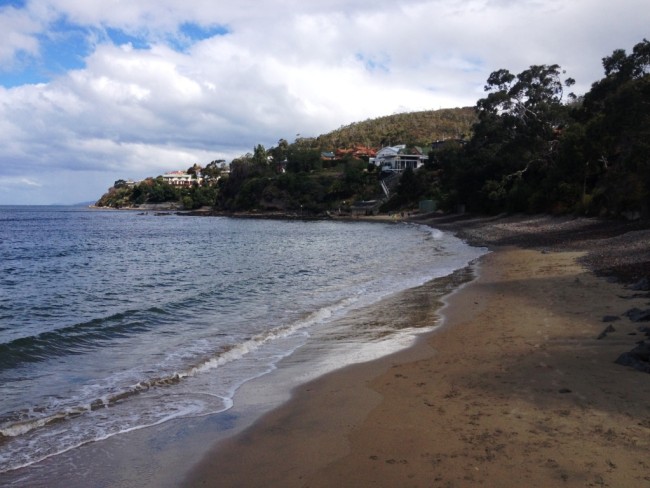
(Charles Darwin spent 12 days in Hobart in 1836. He did indeed walk this beach, and inspect the geology of the foreshore.)
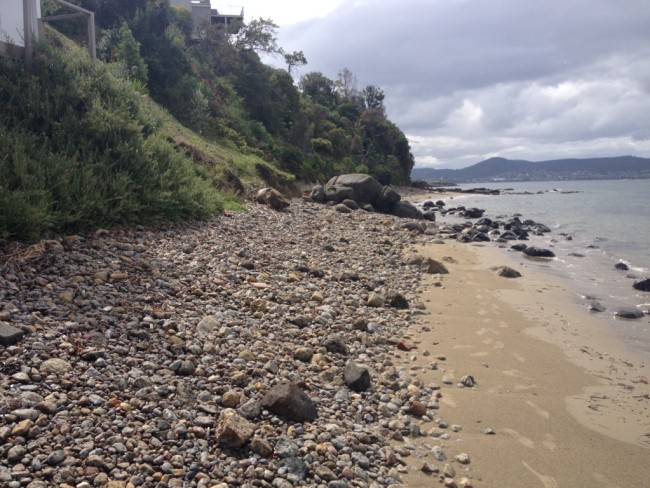
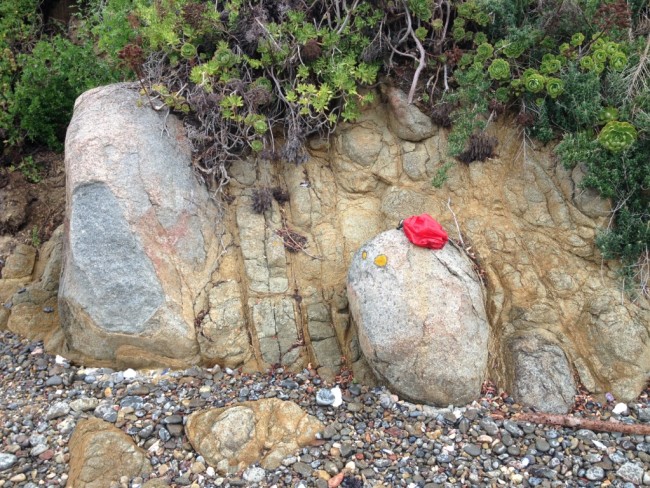
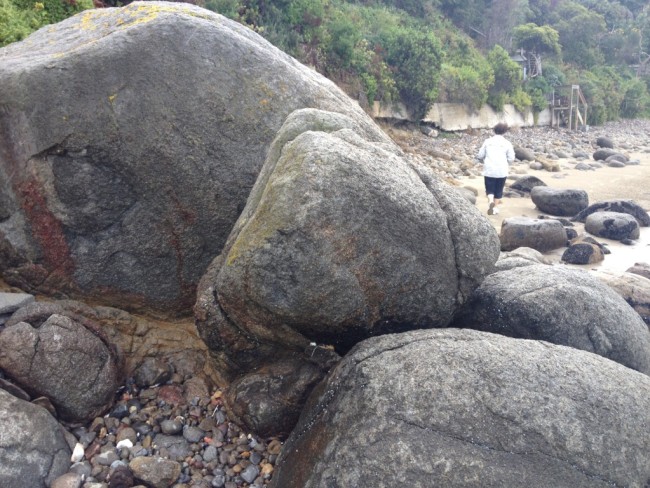
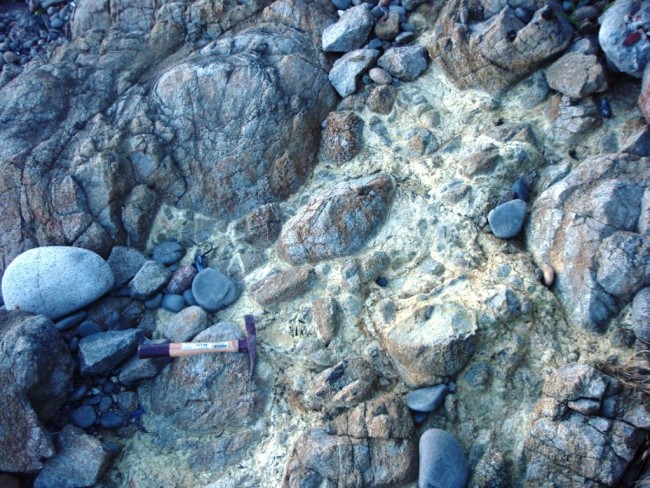
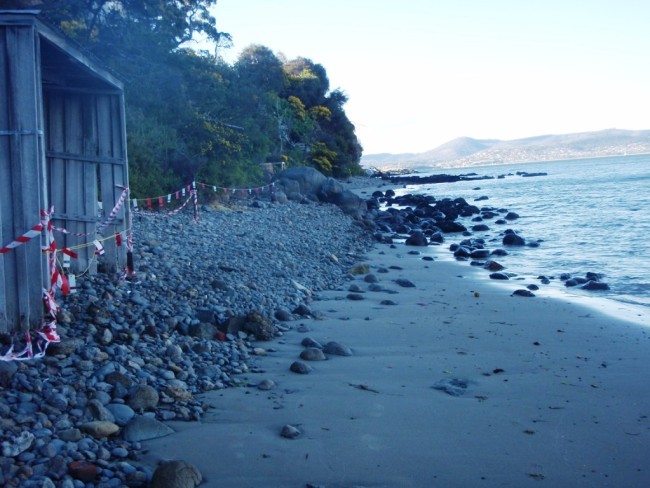
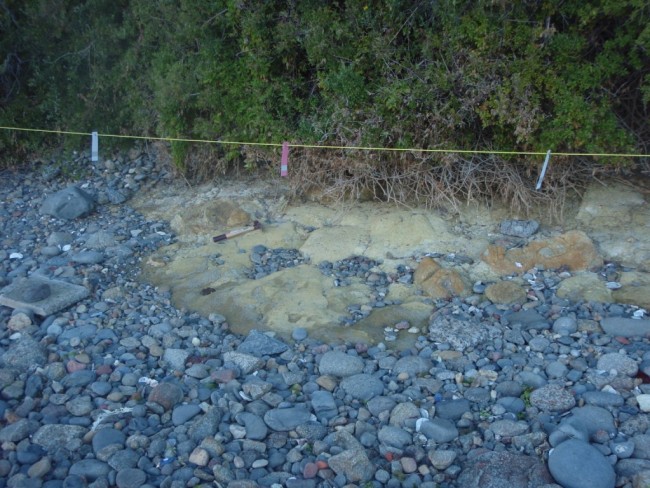
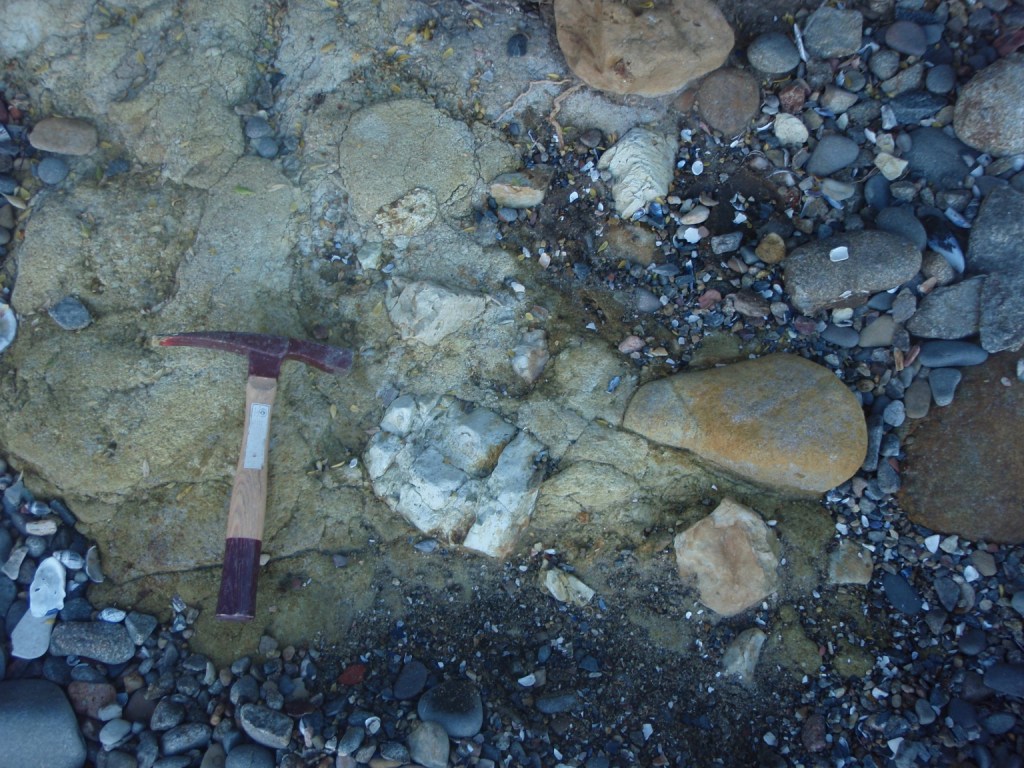
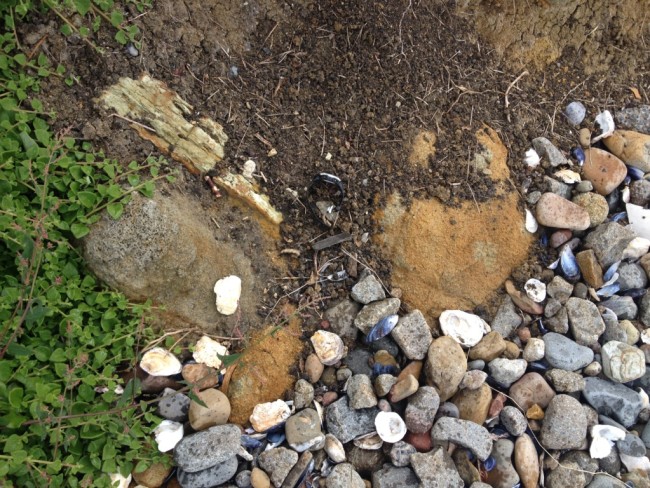
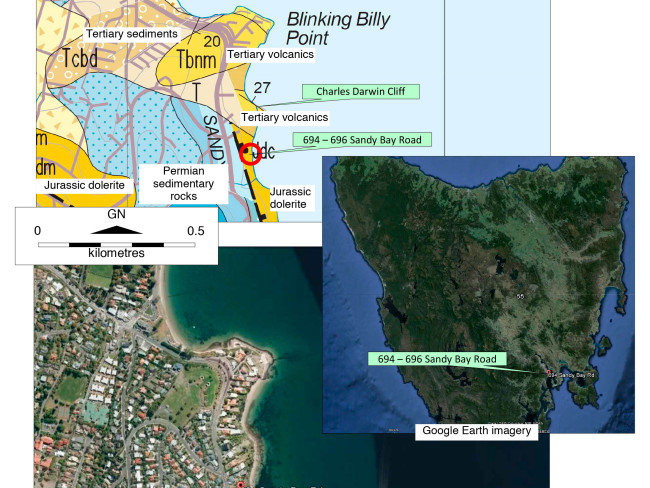
Hi Bill, this is a very interesting article. I’m taking some folk to visit this site in February and your material is really helpful.